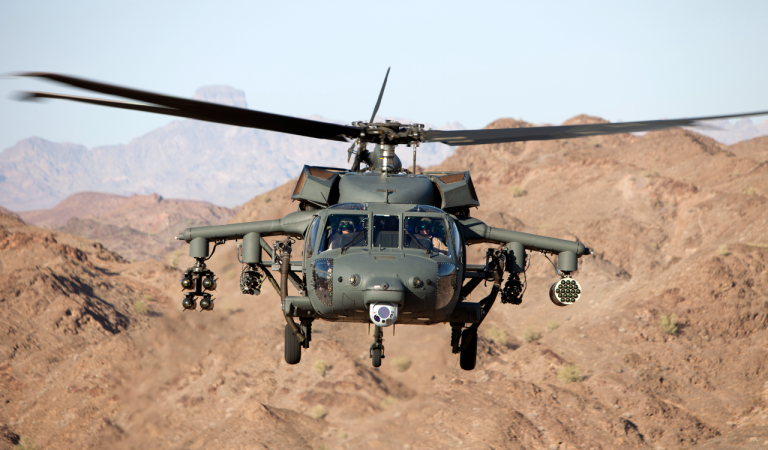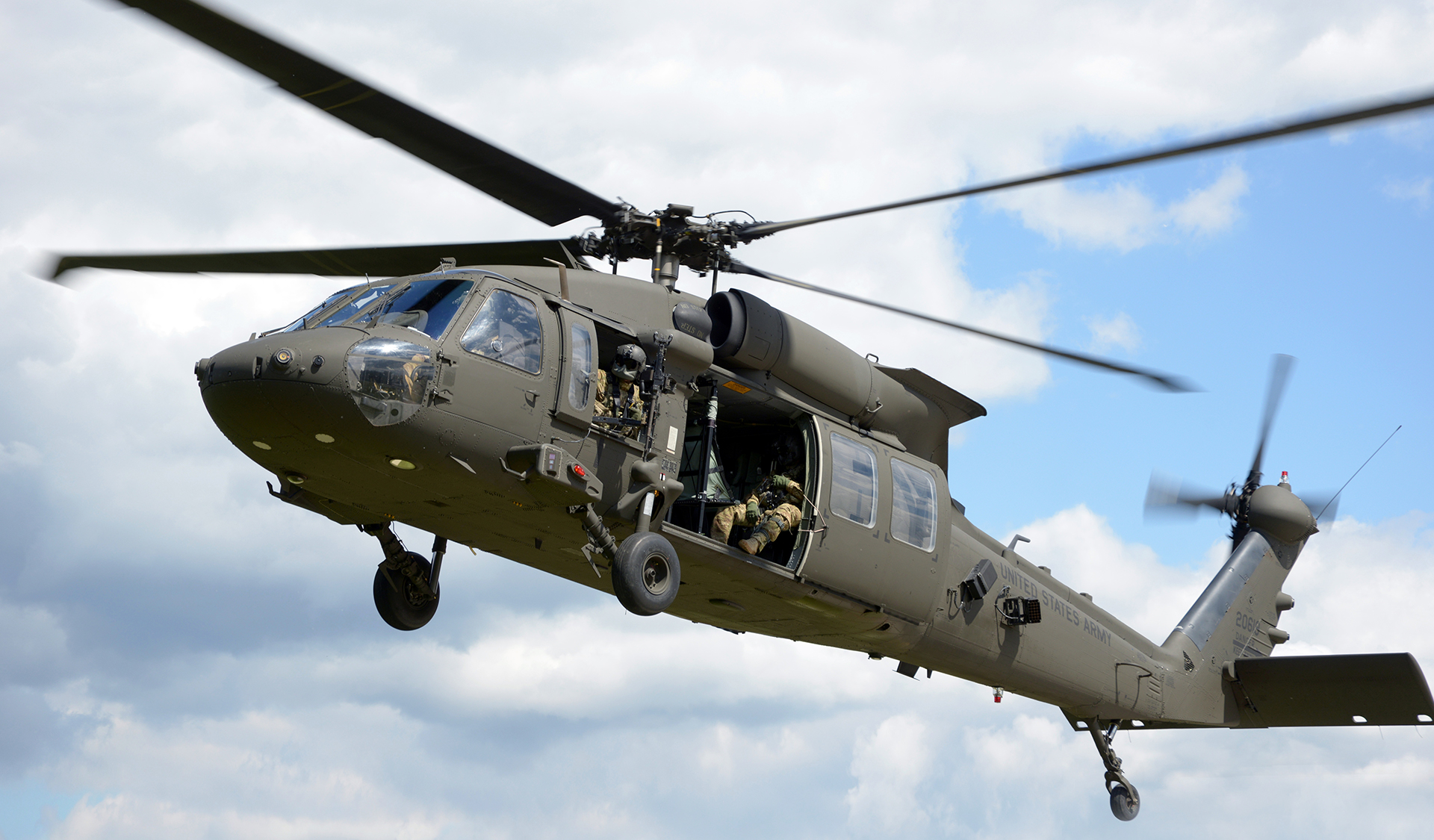The Future of the UH 60: Developments and Upgrades for Improved Performance
The Future of the UH 60: Developments and Upgrades for Improved Performance
Blog Article
UH-60: Developments in Modern Helicopter Design
The UH-60 helicopter stands as a benchmark in contemporary aeronautics, showcasing considerable innovations in design and modern technology that cater to the developing needs of military operations. As we check out the advancement and key developments of the UH-60, it comes to be important to think about just how these developments influence not just current applications however additionally the future landscape of helicopter layout.

Advancement of the UH-60
The development of the UH-60 Black Hawk helicopter represents a significant landmark in aerospace engineering and military aeronautics. Introduced in the late 1970s, the UH-60 was designed by Sikorsky Airplane to satisfy the United States Military's need for a functional utility helicopter capable of executing a range of missions. Its layout emphasized durability, ability to move, and speed, establishing new criteria for operational efficiency.
The UH-60 includes an unique four-blade blades system, which enhances lift and security, permitting it to operate properly in diverse atmospheres. Its airframe is constructed from sophisticated composite products, adding to a reduction in weight while keeping structural stability. The helicopter's layout also includes enhanced the rules of aerodynamics, which enhances fuel effectiveness and increases array.
Throughout the years, the Black Hawk has actually undertaken multiple upgrades to improve its capacities, consisting of improved engines, advanced flight control systems, and modular systems for very easy upkeep and adaptability. The helicopter's capability to do goals ranging from troop transportation to clinical discharge has actually solidified its role as a backbone of U.S. armed forces procedures. The UH-60 Black Hawk continues to be a prime example of how advancement in helicopter layout can dramatically impact military effectiveness and operational versatility.
Advanced Avionics Solutions
Improvements in avionics systems have actually transformed the abilities of modern-day helicopters like the UH-60 Black Hawk, boosting functional efficiency and situational understanding (UH 60). The combination of advanced avionics enables enhanced flight, communication, and navigation management, making the UH-60 more versatile in varied goal accounts
One of the essential features is the innovative electronic cockpit, which employs multifunction displays that provide real-time information, making certain pilots have prompt accessibility to vital trip info. This streamlining of information minimizes pilot work and improves decision-making processes throughout complicated procedures. In addition, the unification of GPS and inertial navigation systems makes it possible for exact positioning and route preparation, enhancing mission implementation in difficult environments.
In addition, advanced avionics systems enhance interaction abilities via safe data web links and voice communication systems, permitting seamless control with ground forces and various other airplane. The integration of automated flight control systems additionally contributes to boosted stability and control, specifically in negative weather or throughout low-altitude maneuvers.
Engine and Performance Enhancements
Engine efficiency in contemporary helicopters has taken a considerable jump ahead, driven by technologies that increase integrity, efficiency, and power. At the leading edge of these innovations is the adoption of more effective turboshaft engines, specifically those employing sophisticated products and modern technologies that enable higher browse around this web-site temperature level resistances and increased thrust abilities. The UH-60 Black Hawk, for circumstances, utilizes the T700-GE-701C engine, which features a dual-channel, full-authority electronic engine control system. This system boosts efficiency while optimizing fuel usage and lowering upkeep needs.
In addition, the combination of engine health and wellness surveillance systems permits real-time diagnostics and anticipating maintenance, dramatically improving functional integrity. These systems not just sharp teams to prospective issues before they come to be critical yet additionally promote extra effective maintenance scheduling, thereby lowering downtime.

Materials and Structural Innovations
Recent advancements in products and architectural design have transformed contemporary helicopter building, boosting both efficiency and durability. The introduction of advanced composite materials, such as carbon fiber reinforced polymers, has significantly decreased weight while maintaining structural integrity. This shift not just boosts gas performance yet likewise boosts haul capability, enabling helicopters like the UH-60 to carry out more diverse missions.
Furthermore, innovations in aluminum alloys and titanium parts have contributed to boosted resistance to rust and tiredness, extending the life-span of important airframe aspects. The strategic use more helpful hints these materials has actually caused a reduction in upkeep demands and improved total operational preparedness.

Additionally, the integration of computer-aided layout (CAD) and additive manufacturing modern technologies has allowed more lightweight frameworks and complicated geometries, maximizing the aerodynamic efficiency of helicopter layouts. These developments promote fast prototyping and manufacturing, allowing makers to react swiftly to progressing goal needs.
Safety And Security and Survivability Features
Security and survivability attributes in contemporary helicopter layout have ended up being paramount, showing the raising demands for objective performance in challenging atmospheres. The UH-60 Black Hawk, a remarkable example, integrates sophisticated technologies to improve team and guest defense. One of the most vital innovations is the incorporation of crashworthy gas systems made to reduce the danger of fire throughout influence. Additionally, the airframe is built with enhanced products that absorb and dissipate power, further securing occupants in case of an accident.
The helicopter additionally utilizes a ballistic security system, that includes armored crew seats and essential systems securing, minimizing vulnerability to small arms fire and shrapnel. Boosted situational recognition is accomplished through advanced avionics and sensing unit innovations, allowing pilots to spot and avoid hazards successfully.
Furthermore, the integration of redundancy in critical systems-- such as twin engines and several flight control networks-- guarantees continued procedure even if one system falls short. The UH-60 is furnished with advanced emergency situation flotation protection devices, boosting survivability in water landings. Jointly, these functions not only boost the security of personnel yet likewise enhance mission success prices in hostile environments, showing the commitment to excellence in helicopter layout.
Conclusion
The UH-60 helicopter represents a considerable improvement in modern-day aviation innovation, integrating cutting-edge products, cutting-edge avionics, and robust security functions. Generally, the UH-60 offers as a standard for future growths in helicopter layout, embodying resilience and versatility in contemporary military operations.
The UH-60 helicopter stands as a benchmark in modern aviation, showcasing significant developments in design and technology that cater to the evolving demands of military procedures. As we discover the advancement and vital technologies of the UH-60, it becomes important to consider how these growths affect not just present applications but also the future landscape of helicopter design.
Presented in the late 1970s, click to read the UH-60 was created by Sikorsky Aircraft to meet the United States Military's demand for a flexible utility helicopter capable of executing a selection of objectives. The UH-60 Black Hawk stays a prime example of how technology in helicopter layout can substantially impact military performance and functional versatility.
Generally, the UH-60 serves as a criteria for future developments in helicopter layout, symbolizing resilience and versatility in contemporary army operations.
Report this page